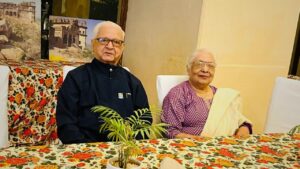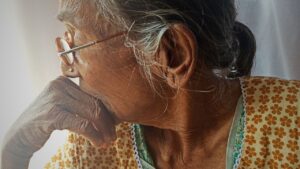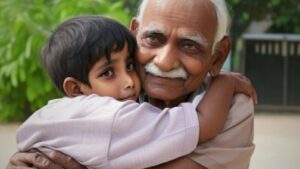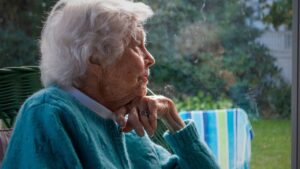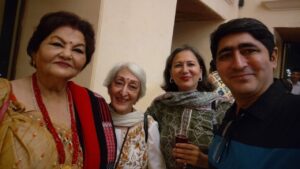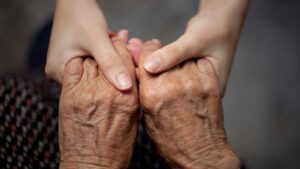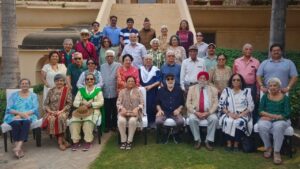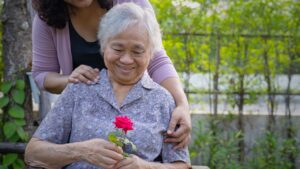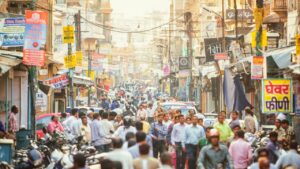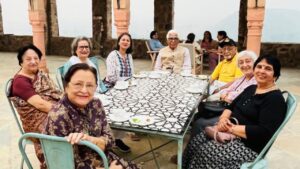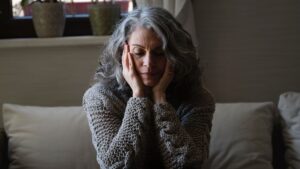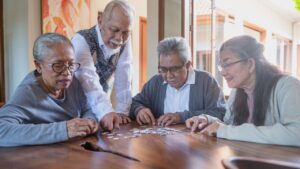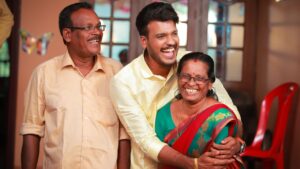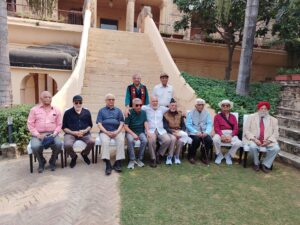Reverse Mortgage was launched in India with a lot of fanfare but unfortunately the scheme was a non-starter and could...
Read MoreChange Language
Blogs
A compilation of Posts and Blogs have been listed which talks about various issues and aspects of Ageing and Elderly Care. The views expressed are solely of the authors. No Government, Agency or Author endorses or validates the contents of this website.
Senior Citizens Demographics in India
Elderly population is no more an insignificant number in the larger landscape of India, they are now a sizeable force...
Read MoreDear Dementia – Did you forget the Toast in the Toaster?
Hello Dementia, I hope all is well at your end, while it would have been nice to hear from you,...
Read MoreArt of Dying or Fear of Dying
We all spend tons of money on learning how to live and be happy, but seldom do we think about...
Read MoreInfrastructure Planning for Older People
What is the main difference between a Developing Nation and a Socially Developed Nation? Yes, economic stability and citizens centric...
Read MoreAssisted Living – Indian Scenario
The term Assisted Living was probably not there in the Indian dictionary till a decade ago, but then, like any...
Read MoreCatch them Young or Catch them Old
The age gap between young and old has drastically reduced in the past 10-15 years. The oldies are getting younger...
Read MoreElder Care Needs Mapping
As we grow older our health and wellbeing needs keep changing. Though the basic needs of the ageing process have...
Read MoreRocking Chairs & Older People
Though we all dream to have an ideal retirement life of sitting on a rocking chair and reading our favourite...
Read MoreHow many people are bothered about Ageing in India?
There is definitely a positive movement in the Aged Care sector which has been simmering for sometime now and hopefully...
Read MoreWho is regulating Senior Citizen Care Homes in India?
A 95 years young lady called to ask if I could visit her and pull-up the Care Home Management for...
Read MoreSenior Living and Urban Planning
Most children want to be the perfect support system for their parents, especially when the parents get “Old Old” and...
Read MoreWhat are we doing for Elderly Care in India?
The not so surprising fact in India is, many of us are already contemplating moving into a retirement home /...
Read MoreEmotional Anxiousness amongst Senior Citizens
It is never an easy decision to leave one’s house, neighborhood, friends & family and relocate to a Senior Citizen...
Read MoreAgeing in Rural India
65% Indians out of the total population of 142 crores (1.42 billion) lives in rural areas, this translates to 92...
Read MoreGrandparents on Rent
A few years back when parents in Japan started hiring Grandparents on rent it used to sound hilarious. The concept...
Read MoreThe Elderly Widows of Vrindavan
Vrindavan is supposed to be one of the holiest cities in India, but unfortunately it has a dark side which...
Read MoreA Caregiver’s Dilemma
Long distance caregiving has its own emotional tides, some days it’s the high tides and some days low. When we...
Read MoreCaregiving – What goes around comes around
Dear Son, I am feeling a bit nervous today, can you please hold my hand for a few minutes ….....
Read MoreLoneliness is not a disease
Loneliness, isolation and neglect are the three main hurdles which elders face from family and community at large. While on...
Read MoreAge is not just a number
Over the past few decades, medical technology and lifestyle changes have seen drastic improvements. Advancements in technology is not only...
Read MoreParents Last Wishes
India has a complex intergenerational culture, especially when it comes to relationship between parents and children. Parents are obsessed to...
Read MoreUrgent need for Registration of Senior Living Facilities
Presently Senior living sector in India is a free-for-all game. There are no checks and balances to regulate the service...
Read MoreElderly Care Legislation in India
Maintenance and Welfare of Parents and Senior Citizens Act, 2007, states that; “The State Government may establish and maintain such...
Read MoreRespite Care – A Caregivers Dilemma
One of the biggest concerns of being a caregiver is, can we leave our loved ones alone? In my opinion,...
Read MoreCaregiver Burnout
IEmotional stability of one’s own self is critical especially if one is a caregiver. It is natural to burnout if...
Read MoreThe Doctors Touch and Older People
There is no rocket science to see the correlation between Ageing and frequent visits to the doctor. As people grow...
Read MoreIdeal Location for Retirement Living
Some people construct large houses in remote areas thinking that, once they “Hang Up The Boots” they can live a...
Read MoreAffordability of Senior Living in India
India has a complex social fabric, the middle class thinks they are equivalent to the rich, yet they don’t have...
Read MoreShould Dementia Care be registered under Mental Healthcare Act 2017?
The past decade has witnessed many Senior Care operators investing in the Memory Care business. High Dependency Care including Dementia/Alzheimer’s...
Read MoreCorporate Social Responsibility (CSR) & Elderly Care
Out of the 1 lakh crores (INR) of CSR expenditure in 5 years (2016-2021), unfortunately there is still no accurate...
Read More140 Million Elderly – Are We Equipped?
As per reports, India’s elderly population i.e. 60+ years is projected to touch 194 million in 2031 from 138 million...
Read MoreElderly Care in India – Advocacy or Action
If eldercare sector in India has to flourish, then it is important to weed out loopholes in the care delivery...
Read MoreSenior Citizens Investment Schemes in India
To ensure a financially safe retirement life one needs to plan in advance. Old age is often called as “Golden...
Read MoreQuality of Life Versus Quality of Death
Most of us work hard throughout our lives to improve our Quality of Life (QoL), but I wonder how many...
Read MoreEstate Planning and Ageing
India is a complicated country, parents may not get along with their children, yet they want to leave their property...
Read MoreDeath & Dying – Guilt, Regrets and Wishes
Most of us take life for granted due to which we land up procrastinating the real & important aspects of...
Read MoreGurugram – Is it becoming the epicenter of Elderly Care Homes in Delhi-NCR region?
Elderly Care is gradually picking up steam in India which is quite evident. Whether it is about Senior Citizen Care...
Read MoreDo we get grumpy and cranky with age?
While there is a lot of literature available about senior care, the point I wanted to debate is, do we...
Read MoreWhat Elderly Parents Fear the Most
Children expect their parents to understand their new age lifestyle yet they rarely want to accept their parents outlook. I...
Read MoreAgeing and Loneliness
There is enough research about ageing and loneliness. Though a lot of people keep writing about loneliness, somehow I think...
Read MoreSenior Citizen Homes in India – Status Quo
It is difficult to paint India’s Senior Living scenario in one colour, all one can assume and hope for is,...
Read MoreCo-living for single elderly people
I had suggested to a few friends that with our advancing age we should pool in resources and setup a...
Read MoreKerala – Senior Living Scenario
Kerala is called “God Own Country”, no wonder it has 31% of India’s Senior Citizen Homes. As per my calculations,...
Read MoreCare of Elderly Women in India
I am sure no one in the world would like to see their mothers being abandoned, destitute and helpless because...
Read MoreSnapshot of All India Senior Citizen Homes
John F. Kennedy said, “Ask not what your country can do for you – ask what you can do for...
Read MoreHome Care to Care Home
It seems India market is gradually realising Senior Care as a growing sector. The number of Home Care providers and...
Read MoreThe Rise of Senior Living Sector in India
The Indian Senior Living Sector seems to be gradually shedding it’s negative image associated with the word Old Age Home....
Read MoreSenior Citizen Homes – Budget Allocation Vs. Budget Spent
FY – 2021-2022A budget of Rs.10,517.62 crore was allocated for the Department of Social Justice and Empowerment for financial year...
Read MoreSenior Living Project Costing – Sample Format
Off late I have been receiving a lot of queries about Senior Living by Hotel Groups, Real Estate Developers and...
Read MoreThe Need for Senior Living Initiatives in India
Internationally Senior Living and Home Care is a well-developed sector/industry. Countries like USA, Canada, UK, Australia, Europe and a few...
Read MoreSenior Living Database – The Disadvantaged Elderly
I was searching for the list of Elder Care Homes in India. To my surprise, I could not find a...
Read MoreSenior Living Models & Scope of Intervention
Senior Living and Elder Care in India is going to witness an exponential growth in the next two decades. The...
Read MoreSenior Living Formats
Senior Living in India is witnessing a positive growth with various projects coming up across the country. Operators are experimenting...
Read MoreImpact of Divorce on Elderly (Silver Divorce)
Divorce and broken families have never been easy topics of discussion, especially in public forums, yet they are the underbelly...
Read MoreDo we really require Retirement Communities?
Globally Residential Care for the ageing population is straining the finances of state sponsored Elderly Care, due to which many...
Read MoreCan a person with Dementia be convicted for Crime?
What happens if a person with Dementia physical abuses a women? Dementia and police cases can be a tricky legal...
Read MoreNational Policy for Older People in India
Well-being of Senior Citizens is a constitutional mandate which needs to be implemented in full spirit to have a visible...
Read MoreWhy Single Room Assisted Living is not advisable for couples
* Why Senior Living Couples unit should have 2 rooms? * Why elderly couples need two separate rooms in retirement...
Read MoreThe Fear of Dying
Majority of us humans tend to be scared of dying, it is but natural. There are many instances in life...
Read More







